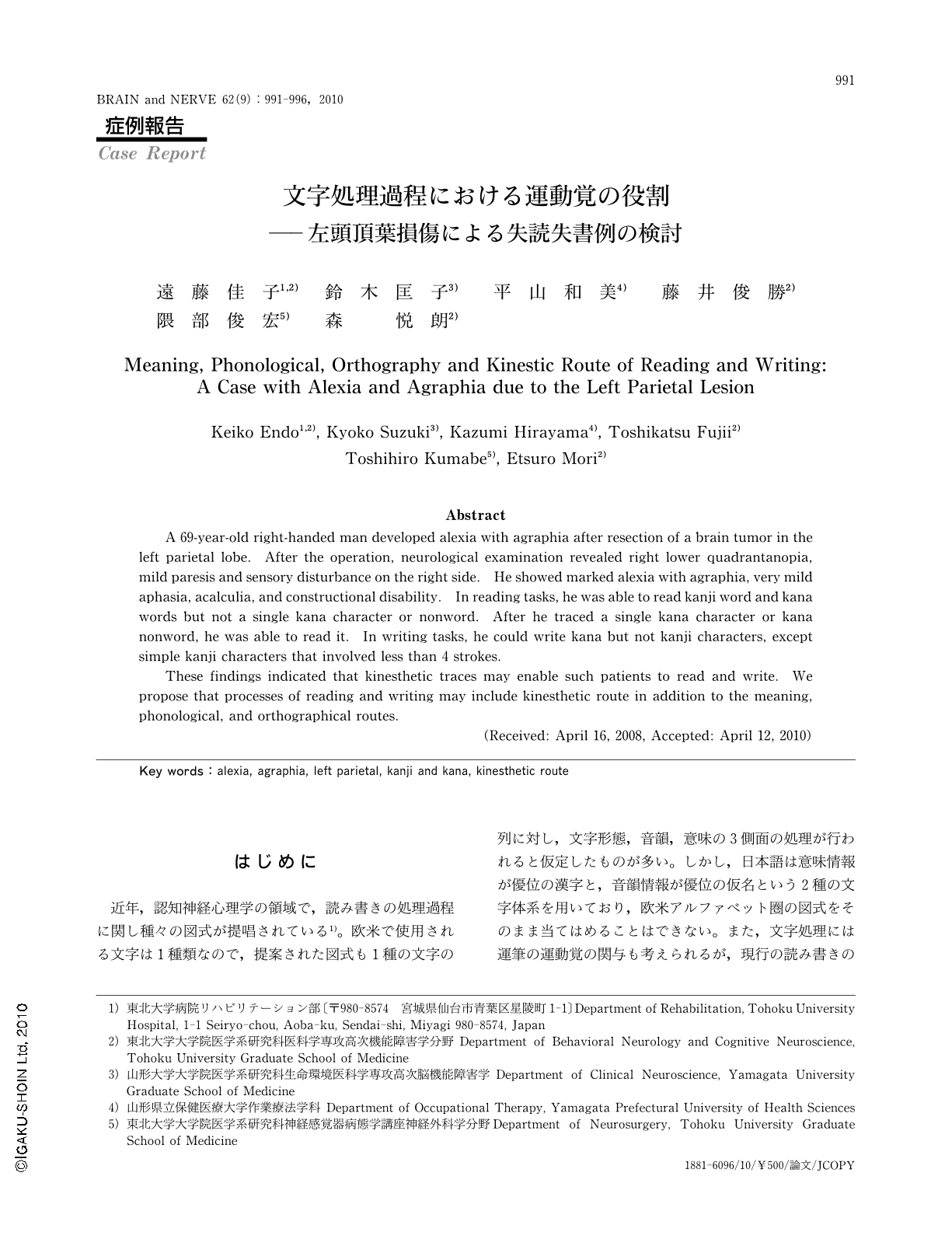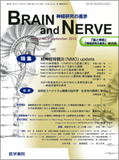Japanese
English
- 有料閲覧
- Abstract 文献概要
- 1ページ目 Look Inside
- 参考文献 Reference
はじめに
近年,認知神経心理学の領域で,読み書きの処理過程に関し種々の図式が提唱されている1)。欧米で使用される文字は1種類なので,提案された図式も1種の文字の列に対し,文字形態,音韻,意味の3側面の処理が行われると仮定したものが多い。しかし,日本語は意味情報が優位の漢字と,音韻情報が優位の仮名という2種の文字体系を用いており,欧米アルファベット圏の図式をそのまま当てはめることはできない。また,文字処理には運筆の運動覚の関与も考えられるが,現行の読み書きの図式には運動覚経路が組み込まれていない。われわれは,左の角回の皮質,皮質下を含む頭頂葉損傷後に,文字種(漢字,仮名)や意味の有無によって読字と書字の成績が異なり,運動覚経路を介したなぞり読みが有効であった失読失書症例を経験し,読み書き障害の機序について検討したので報告する。
Abstract
A 69-year-old right-handed man developed alexia with agraphia after resection of a brain tumor in the left parietal lobe. After the operation, neurological examination revealed right lower quadrantanopia, mild paresis and sensory disturbance on the right side. He showed marked alexia with agraphia, very mild aphasia, acalculia, and constructional disability. In reading tasks, he was able to read kanji word and kana words but not a single kana character or nonword. After he traced a single kana character or kana nonword, he was able to read it. In writing tasks, he could write kana but not kanji characters, except simple kanji characters that involved less than 4 strokes.
These findings indicated that kinesthetic traces may enable such patients to read and write. We propose that processes of reading and writing may include kinesthetic route in addition to the meaning, phonological, and orthographical routes.
(Received: April 16,2008,Accepted: April 12,2010)

Copyright © 2010, Igaku-Shoin Ltd. All rights reserved.


